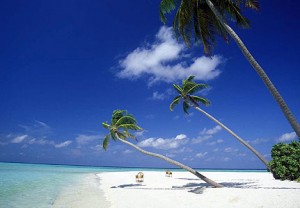I saw a letter to the editor in yesterday’s *Bangkok Post* that raised the question of whether exploration oil drilling could do any more harm to Samui’s natural environment than mass tourism has already accomplished. Same old story, wherever you go–the same scenes that are being “spoiled” for the old hand, are often “just wonderful, so natural!” to the first-time visitor.
Here’s a take I did on this notion years ago (first photo from www.phuket-trips.com):
The silence boomed. At 1:00am the weary bartender had turned off the music. And the lights. In your average Bangkok bar, the procedure is to turn off the music and turn on the lights, which instantly causes everybody to metamorphose into furtive grey creatures scarcely distinguishable from the cockroaches, which in turn distinguish themselves from the cigarette butts and so on only when they move. But we were not in a Bangkok bar. Our cocoon of light and sound had suddenly fallen away to expose us to the tropical island beach as it once was, before people came along to improve things. (Night photo copyright Xxxx .)
We were sitting at an open restaurant-bar on a beach on Koh Samui. Some nice rhythm and blues had been romping away on the stereo. The bar was festooned with festive lights, and a palm tree limned with more lights leaned out over the sand, a beacon for tipsy stragglers from other parties down the beach. All very convivial. Abruptly, then, the lights and music were no more, and we dropped through some hole in space-time. It took a couple of seconds before our stunned sensibilities could make out the soughing of breeze in palm fronds, the gentle surling of surf, the chirp of a lizard, a faint burst of laughter from somewhere down along the bay. The universe had been expanded beyond the bar, magically transformed. Now we could see. The moon cast a silver sheen across sand flats and sea. Palm trees were serrated cut-outs pasted against a starry sky.
We sat in silence for some time longer, without drinks or diversion other than the still ambience of the nocturnal tropical beach. It was easy to miss out on this sort of experience altogether. But wasn’t this the reason for coming away from the city in the first place?
One of our party suddenly broke the tranquility: “You get these glorious white-sand beaches, lofty coconut groves, crystal water lapping on all sides, and what happens? They come along and pave it all over with beerbars and hotel swimming pools.”
I could share his sense of protest. But, I reflected, it’s more complicated than that. Change is in the very nature of things.
Take a tropical island like Thailand’s Koh Samui. Over vast ages, unimaginable forces in and beneath the Earth’s crust thrust up the geographical feature of which Samui is a part – a line of low granitic mountains that forms the backbone of the peninsula, running from Malaysia along the southern Thai mainland and out into the Gulf of Thailand. Erosion gradually broke the rock down, providing soil for the growth of seeds that floated in by sea or were air-lifted and planted with bird droppings. Dense rain forest provided homes for animal species which first arrived aboard flotsam or by way of land bridges when sea levels were lower than they were now. Coral reefs were seeded by drifting plankton. Crabs and other marine life hitched rides in from other lands aboard coconuts. Eventually, many thousands of years later, the first people came ashore.
Until the 1970s and the advent of tourism, the Samui islanders largely subsisted on farming and fishing. The early history of the region is uncertain, but we can imagine that the first human habitation comprised little more than fishing camps here and there along the coast. Later, Samui came to lie on the edge of a major trade route between India and China; and both Indians and Chinese would have established at least temporary settlements in the area. According to legend, for example, Chinese junks put in at Samui for repairs and provisioning. More recently, 150-200 years ago or more, Chinese immigrants from Hainan Island came by sea. Commercial cultivation of coconuts, formerly the economic mainstay of the island, probably began at about that time. More recently still, Muslim settlers migrated from Pattani, on the mainland to the south, and settled mainly in a coastal fishing village that still preserves its cultural heritage. All of these people and others have contributed elements of their respective traditions to create the Samui we know today.
When we speak of the “natural beauty” of the island – the lush green hills and the lofty coconut palms – we’re talking about the product of hundreds of years of human habitation. Decades before the advent of tourism, the original rain forest had virtually disappeared, displaced by coconut groves, fruit orchards, rice paddies and villages. Aside from the birds, lizards and a few pigs, almost all of the local terrestrial wildlife has succumbed to hunters and to the clearing and cultivation of what had been its natural habitat. (Some would even argue that Samui’s natural environment, in some ways, is in better shape now than it was a few years ago. From the outset of the tourism boom, for one thing, dynamite fishermen were forced out of the area, which helped to preserve the coral reefs.) Today there are a few patches of the original forest back in the hills, and the island’s many streams are bordered by thick jungles of secondary growth such as bamboo and rattan. But the “pristine” scenes along the coast and up in the hills, as beautiful as they may be, have been in large part shaped by human activity.
With all that in mind, we should accept the inevitability of change. At the same time, however, we need constant reflection and dialogue concerning what we value and how best we can direct change to our advantage. On an island such as Samui you can still have it both ways, to some extent – whether you feel “modern” hotels and modern music is important, or whether you prefer more traditional landscapes and the music of the elements, you can have a good time.
So I thought about this and I thought about that, but mostly I enjoyed the peace and the closeness to the night elements. And, earlier, I hadn’t considered these matters at all, but only enjoyed the music and lights. I suppose it’s all in the mind, ultimately.
…
And, as Leary would have it:
“Things are always going to get worse, and we just have to take what friggin’ solace we can from that. What it means, we’re always living in a golden age, at least looking back from any time in the future.”
(Leary, in Yawn: A Thriller, by Collin Piprell)

Thanks for sharing such a nice opinion, paaragraph is fastidious,
thats wwhy i have read it entirely